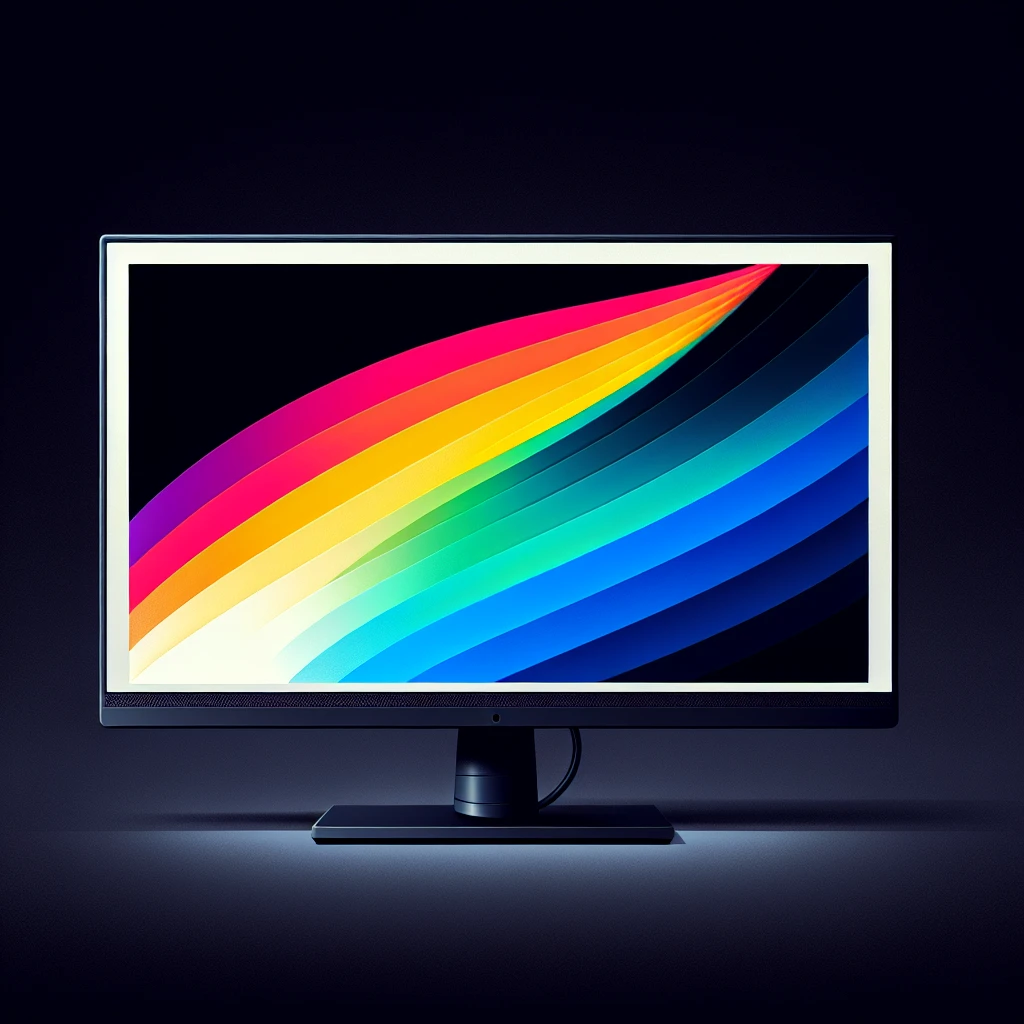When it comes to displaying true black colors, the capabilities of LCD monitors have been a hot topic among tech enthusiasts and professionals. True black is often considered the holy grail of display technology, offering perfect contrast and immaculate picture quality. In this article, we will explore whether LCD monitors can display true black colors and what technological limitations might prevent them from achieving this benchmark.
The Challenge of True Black in Display Technology
Before diving into the specifics of LCD monitors, it’s crucial to understand what true black means in the context of display technology. True black is a color with no light emission. In a pixel displaying true black, the brightness should be zero, making it indistinguishable from the monitor’s off state.
To better understand, let’s look at a quick comparison of display technologies:
| Display Technology | Key Feature for Blacks | Limitation for True Black |
|---|---|---|
| LCD | Backlight | Light leakage, low contrast |
| OLED | Self-emissive pixels | Burn-in risk |
| CRT | Electron beams | Bulkiness, power consumption |
| QLED | Quantum dots | Improved contrast, yet still backlit |
Understanding LCD Technology
LCD, or Liquid Crystal Display, works by manipulating liquid crystals through electrical currents to control the passage of light from a backlight source. This arrangement inherently means that some level of light always permeates through the screen, making it exceptionally challenging to achieve true black. The liquid crystals can block some light, but not all of it, leading to a phenomenon known as light leakage or backlight bleed.
Backlight Systems in LCDs
LCD monitors typically use one of two types of backlighting: CCFL (Cold Cathode Fluorescent Lamp) or LED (Light Emitting Diode). While both serve the same function, LED backlighting is more efficient and offers better control over light distribution than CCFL. The degree of control over the backlighting plays a significant role in how close an LCD can come to displaying true black.
Local Dimming Technology
To mitigate the issue of light leakage, some LCDs employ local dimming technology. In local dimming, the backlight is divided into zones that can be dimmed or brightened independently. This allows darker areas of an image to have reduced backlight intensity, improving the apparent contrast ratio and making blacks appear deeper.
Comparison with OLED Technology
To understand the limitations of LCDs, it’s useful to compare them to OLED (Organic Light Emitting Diode) technology. Unlike LCDs, OLED screens are self-emissive, meaning each pixel emits its own light. When an OLED pixel is turned off, it emits no light, creating a true black color. This results in significantly higher contrast ratios compared to even the best LCDs.
OLED vs LCD: Contrast and Blacks
Here is a side-by-side comparison:
| OLED | LCD | |
|---|---|---|
| Black Levels | True Black | Dark Gray |
| Contrast Ratio | Infinity:1 | 1000:1 to 5000:1 |
| Color Accuracy | High | Moderate |
Implications for Different Use Cases
The ability to display true black is crucial for various applications, from entertainment to professional use. Graphic Designers and Photographers: Accurate black levels are critical for image editing and printing. Failing to display true blacks can lead to inaccuracies in work that requires precise color grading.Movie Enthusiasts: True blacks can significantly improve the viewing experience by providing better contrast and vibrant color reproduction. However, LCD monitors might fall short in dark scenes.Gamers: For gamers, higher contrast ratios can enhance the visual experience, making it easier to spot details in dark environments. That said, most gaming monitors still use LCD technology due to quicker refresh rates and response times compared to OLEDs.
Technological Advancements
Though LCD technology has limitations in displaying true black, continual advancements are narrowing the gap. Modern LCDs with full-array local dimming and advanced backlight control deliver much-improved black levels. Newer mini-LED technologies are also making significant strides in enhancing contrast ratios and black performance.
Future Prospects
While OLED currently holds the crown for true black display capabilities, emerging technologies like MicroLED may pose a challenge. MicroLED combines the best aspects of OLED and LCD, offering self-emissive pixels without the risk of burn-in and with better longevity.
Concluding Thoughts
In summary, the inherent design and technology of LCD monitors make it virtually impossible to display true black colors. While technological advancements and features like local dimming and improved backlighting have brought LCDs closer to achieving this goal, they still fall short compared to OLED. For true black and unparalleled contrast, OLED remains the superior choice. However, the ongoing innovation in LCD technology continues to make them a viable option for many applications where true black might not be a critical requirement.

